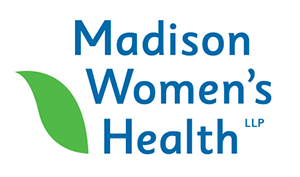Understanding and Overcoming Yeast Infections During Pregnancy
Pregnancy brings a host of changes to your body. One unpleasant surprise is that expectant mothers are more likely to develop yeast infections during pregnancy. Yeast infections are common during pregnancy due to hormonal changes. Fortunately, they’re usually easy to treat and prevent.
In this article, we’ll walk you through everything you need to know about yeast infections when you’re pregnant—what causes them, how to spot the symptoms, safe treatment options, and tips to reduce your risk.
Yeast Infections Are Common During Pregnancy
Yeast infections happen when there’s an overgrowth of fungus, Candida albicans being one of the potential fungii implicated. Thanks to hormonal changes, pregnant women are more susceptible to these overgrowths. The increased estrogen makes it easier for yeast to grow. Changes in vaginal pH levels can disrupt the normal balance. Untreated gestational diabetes also increases your risk, as the extra sugar in your system feeds the yeast.
Vaginal yeast infections pose little risk to your pregnancy or baby. However, some doctors may treat all expecting mothers before delivery to prevent thrush in newborns. In Europe, this preventative treatment is common, though less so in the U.S.
Yeast Infection Symptoms
The symptoms of a yeast infection during pregnancy are the same as when not pregnant. They include:
- itching
- burning
- redness
- thick, white discharge resembling cottage cheese
Diagnosis
The only way to know for sure if you have a yeast infection is through a diagnosis from your doctor.
Self-diagnosis is notoriously unreliable and can lead to improper treatment. Some women mistake normal changes in vaginal discharge during pregnancy for an infection — and then they self-treat unnecessarily. Others may have an underlying condition, like bacterial vaginosis (BV), and mistake it for a yeast infection. If the cause of your discomfort is BV or another infection, using over-the-counter antifungal creams won’t help. That’s why it’s so important to consult your women’s physician or OBGYN provider.
Your OBGYN will perform a wet prep test or a culture test to check for signs of excess yeast. During a wet prep test, your doctor examines a sample of vaginal discharge under a microscope. They’re looking for budding yeast and hyphae, the branching filaments that make up the body of the yeast fungus. A culture test involves taking a swab of the vaginal discharge and growing it in a substance that promotes yeast growth. If yeast colonies develop, it confirms an infection.
These tests are quick, painless, and safe during pregnancy.
Safely Treating Yeast Infections While Pregnant
Antifungal medications
The most common treatments are antifungal creams or suppositories like clotrimazole (Lotrimin) and miconazole (Monistat). These medications are considered safe for pregnant women. They work by destroying the cell walls of the Candida fungus that causes the infection. Treatment may need to last longer than the usual seven days to fully clear up the infection during pregnancy.
The oral antifungal fluconazole (Diflucan) is avoided until after delivery due to possible risks to the baby. However, you can typically use the topical creams and suppositories to relieve your symptoms.
Talk to your OBGYN about the best treatment plan for you based on your medical history. They may want to test a sample to determine the specific type of yeast causing your infection before prescribing medication.
Easing discomfort
In the meantime, you can take steps to relieve discomfort from your yeast infection:
- Apply a cold compress to your vulva to reduce inflammation and itching. Do this for 10-15 minutes at a time, a few times per day.
- Soak in a warm bath with baking soda, oatmeal bath product, or Epsom salt. The water will help reduce irritation, while the add-ins can help relieve itching.
- Use unscented baby wipes instead of toilet paper, which can further irritate the area.
- Wear cotton underwear and loose, breathable clothing. Avoid pantyhose and tight-fitting pants or shorts.
- Ask your OBGYN about using hydrocortisone cream to help with inflammation. Low-dose steroids are often considered safe during pregnancy.
Preventing Yeast Infections During Pregnancy
Check your wardrobe
Yeast thrives in warm, wet areas. Tight-fitting synthetic fabrics trap heat and moisture, creating the perfect environment for yeast overgrowth. Cotton underwear and loose pants or dresses will keep you more comfortable and help prevent infection.
Change damp clothing right away. Any damp area such a bathing suit or sweaty workout clothes should be removed as soon as possible.
Practice good hygiene
Wash the vaginal area with water. Harsh soaps can irritate sensitive skin and disrupt the natural balance of good bacteria. After using the toilet, be sure to pat instead of rub dry, and always wipe from front to back.
What about probiotics?
While some women add yogurt with probiotics to their diets, there is no good data supporting the use of probiotics to prevent vaginal yeast infections.
See Your Doctor For Any Infection
Follow these preventive tips, practice good self-care, and maintain open communication with your OBGYN to help reduce your chances of developing a yeast infection during pregnancy.
Don’t self-diagnose or treat a yeast infection during pregnancy. See your doctor right away. It could be a simple yeast infection, or it could be something else that needs a different treatment.
Take comfort in knowing that yeast infections pose no harm to your baby, and effective treatment options are available should an infection occur.
We’re here to support you through all the ups and downs of pregnancy and want you to feel as comfortable as possible! If you have concerns, please let us know.
 Dr. Dickmeyer has been providing healthcare for women in the Madison area since 1998 and is a founding member of Madison Women’s Health. Her specialties include minimally invasive surgical techniques, high and low risk obstetrics, pelvic floor disorders and postmenopausal medicine.
Dr. Dickmeyer has been providing healthcare for women in the Madison area since 1998 and is a founding member of Madison Women’s Health. Her specialties include minimally invasive surgical techniques, high and low risk obstetrics, pelvic floor disorders and postmenopausal medicine.







